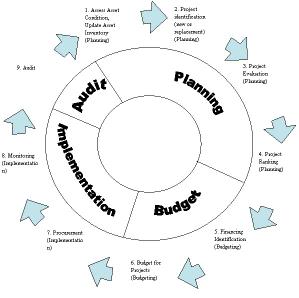Contents:


Now, let’s have a look at the differences between accounts receivable and accounts payable. Therefore, it is important that you manage your accounts receivable carefully. It is an essential current asset that helps strengthen working capital requirements.
However, both have various distinct features and are created and dealt with in different manners and circumstances. Notes receivable refers to an asset of a bank, company, or another organization that holds a written promissory note from another party. Notes receivable carry interest charges; thus, when the maturity date approaches, it can be extended if the company wish to accumulate more interest.
Notes Payable is a liability as it records the value a business owes in promissory notes. Notes Receivable are an asset as they record the value that a business is owed in promissory notes. A closely related topic is that of accounts receivable vs. accounts payable.
What are examples of receivables?
The acid-test ratio reveals whether the entity could pay all its current liabilities if they were to become due immediately. In the percent-of-receivables method, the business uses only one percentage to determine the balance of the Allowance for Bad Debts account. However, in the aging-of-receivables method, the business groups’ individual accounts according to how long the receivable has been outstanding. Under the allowance method, accounts receivable are shown at the net realizable value.
Form 10-Q TRANSUITE.ORG INC. For: Feb 28 – StreetInsider.com
Form 10-Q TRANSUITE.ORG INC. For: Feb 28.
Posted: Wed, 12 Apr 2023 17:12:45 GMT [source]
As the company follows a 90-day credit cycle, it will convert the sales to cash. The business understands that when processing credit transactions, not all of its customers will make payments. As a result, the company may occasionally suffer losses known as bad debts. It records pending payments of clients buying on credit and is recorded in the Balance sheet as a Current Asset. This report groups your accounts receivable balances based on the age of each invoice.
How Do You Record a Loan Receivable in Accounting?
Accounts receivable is any amount of money your customers owe you for goods or services they purchased from you in the past. This money is typically collected after a few weeks and is recorded as an asset on your company’s balance sheet. Accounts receivables, however, are unsecured debts that don’t have any collateral backing them up. As you’ve learned, accounts receivable is typically a more informal arrangement between a company and customer that is resolved within a year and does not include interest payments. In contrast, notes receivable is a more formal legal contract between the buyer and the company, which requires a specific payment amount at a predetermined future date.
Adam Hayes, Ph.D., CFA, is a financial writer with 15+ years Wall Street experience as a derivatives trader. Besides his extensive derivative trading expertise, Adam is an expert in economics and behavioral finance. Adam received his master’s in economics from The New School for Social Research and his Ph.D. from the University of Wisconsin-Madison in sociology.

Alternatively, the note may state that the total amount of interest due is to be paid along with the third and final principal payment of $100,000. When the note is due within less than a year, it is considered a current asset on the balance sheet of the company the note is owed to. If its due date is more than a year in the future, it is considered a non-current asset. In accordance with S-X 5-02, other receivables that are in excess of 5% of total assets should be presented separately on the face of the balance sheet or in a footnote. The amount of interest income recognized using a cash-basis method of accounting during the time within that period that the loans were impaired, if practicable.
Component of Note Receivable
Because all future receipts of cash, as well as defaults, are not known, net receivables represent an estimated amount. This is largely contingent on the estimated amount of uncollectible accounts. Management thus has the potential to manipulate the value of net receivables by adjusting the allowance for doubtful accounts. The aging schedule may calculate the uncollectible receivables by applying various default rates to each outstanding date range. The allowance for doubtful accounts is a company’s estimate of the amount of the accounts receivable it expects it will have to write-off as uncollectible.
Accounts receivable is the dollar amount of credit sales that are not collected in cash. When you sell on credit, you give the customer an invoice and don’t collect cash at the point of sale. This account is a contra account that goes against sales revenue on the income statement. Another example of a contra account is allowance for doubtful accounts, which you can learn about in our bad debt expense article. The unamortized net fees and costs shall be reported as a part of each loan category. Accounts payable is the money owed to vendors and suppliers that results in cash outflow.
Programmable Services And Cloud Communications Make … – Seeking Alpha
Programmable Services And Cloud Communications Make ….
Posted: Thu, 13 Apr 2023 13:07:47 GMT [source]
Notes receivable is a legally binding agreement between the issuer and the payee. Dili has a professional qualification in Management and Financial Accounting. She has also completed her Master’s degree in Business administration.
When to call something ‘bad debt’
It is important to correctly classify where your botkeepers belong to gauge your business’s profitability. Bad debt can also result from a customer going bankrupt and being financially incapable of paying back their debts. One way to get people to pay you sooner is to make it worth their while.

One common example of accounts payable are purchases made for goods or services from other companies. Depending on the terms for repayment, the amounts are typically due immediately or within a short period of time. The guidance allows an entity to essentially ignore prepayment risk in the hedge relationship even when prepayable assets are present in the closed portfolio. It does so by permitting designation of the portion of the pool not expected to be prepaid, defaulted, or sold as the hedged item. Accounts payable are expenses incurred from buying from vendors and suppliers.
What Do Accounts Payable and Accounts Receivable Have in Common?
The interest promised in the note is reported as interest expense by the borrower, and as interest income by the lender. What is a critical element of internal control in the handling of receivables by a business? Common examples of other receivables include dividends receivable, interest receivable, and taxes receivable. Lewis Publishers requires 10,000 tons of paper for publishing books at the rate of $20 per ton. Walmart agrees to buy 50,000 units that people can only buy at Walmart.
- Company A is waiting to receive the money, so it records the bill in its accounts receivable column.
- In fact, it will still be an asset long after the loan is paid off, but consider that its value will depreciate too as each year goes by.
- When the payment on a note is received, Cash is debited, Note Receivables is credited, and Interest Revenue is credited.
- The average collection period is the amount of time it takes for a business to receive payments owed by its clients in terms of accounts receivable.
- ○ the amount of financing receivables that defaulted, including the period-end amortized cost basis for financing receivables that defaulted.
StyleVision’s bookkeeper creates an accounts payable journal entry and credits Frames Inc.’s account $500 by Sept. 15, then debits $500 from StyleVision’s inventory asset account. When a company owes debts to its suppliers or other parties, these are accounts payable. To illustrate, imagine Company A cleans Company B’s carpets and sends a bill for the services.
Empresa Distribuidora y Comercializadora Norte S.A. (EDENOR … – PR Newswire
Empresa Distribuidora y Comercializadora Norte S.A. (EDENOR ….
Posted: Mon, 10 Apr 2023 23:10:00 GMT [source]
https://1investing.in/ receivable represent a written promise that a borrower will pay a fixed amount of principal plus interest by a certain date in the future. Accounts receivable refer to the outstanding invoices that a company has or the money that clients owe the company. The phrase refers to accounts that a business has the right to receive because it has delivered a product or service. Accounts receivable, or receivables, represent a line of credit extended by a company and normally have terms that require payments due within a relatively short period. Liquidity is defined as the ability to generate sufficient current assets to pay current liabilities, such as accounts payable and payroll liabilities.

Accounts receivable, sometimes shortened to “receivables” or “A/R,” is money owed to a company by its customers. If a company has delivered products or services but not yet received payment, it’s an account receivable. Current liability account that keeps track of money that you owe to any third party. The third parties can be banks, companies, or even someone who you borrowed money from.




